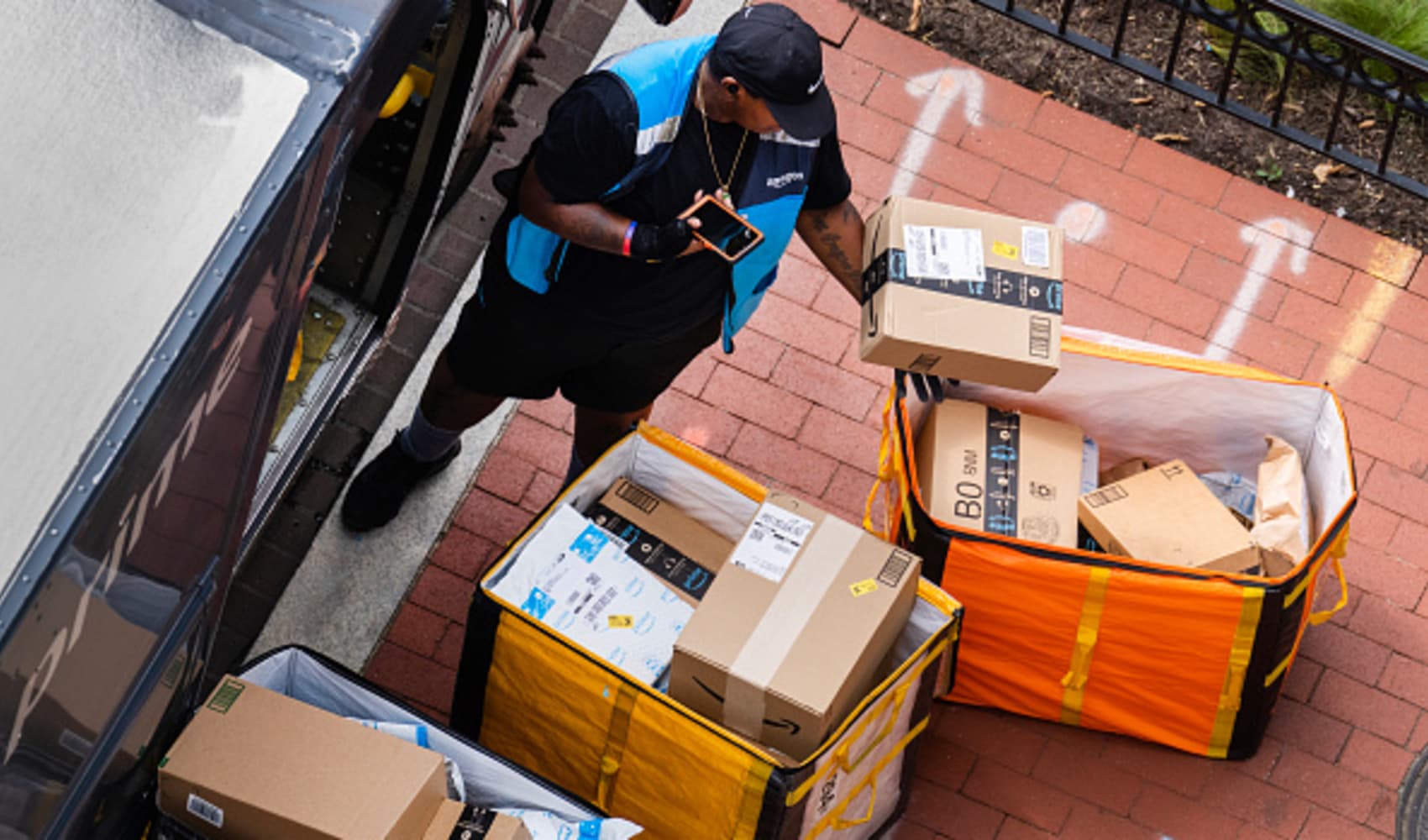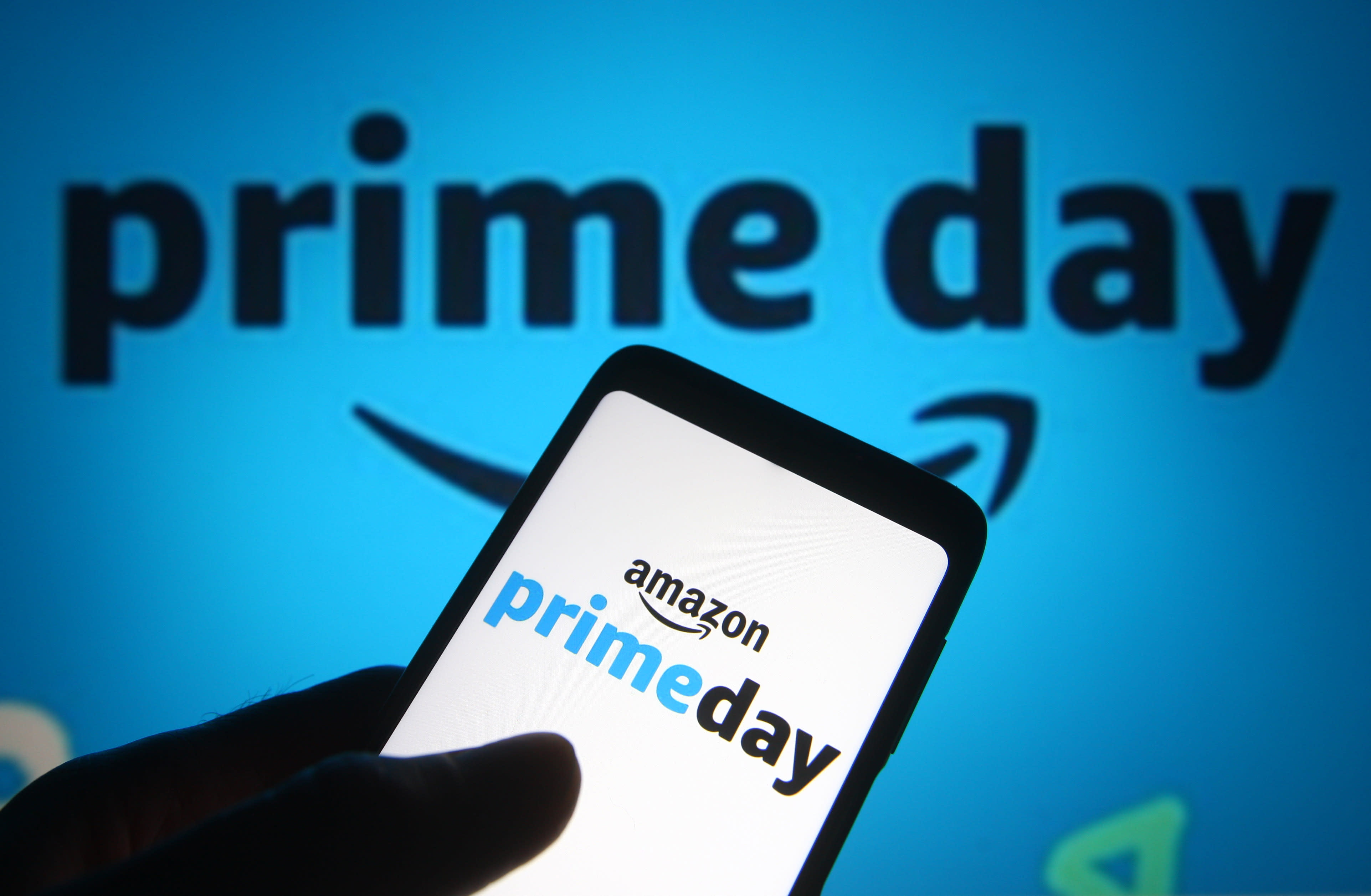Amazon Prime Day is here, and experts are reminding consumers to be wary of scams.
Deceptions such as phony emails from people impersonating online retailers like Amazon are nothing new. But phishing attempts increase amid the heavy spending seen during significant sales events, whether it's Black Friday or Prime Day, according to the Better Business Bureau.
“This is a huge moment on the retail calendar," Josh Planos, vice president of communications and public relations at the Better Business Bureau, previously told The Associated Press. "And because of that, it represents an enormous opportunity for a scammer, con artist or even just an unethical business or organization to capitalize on the moment and separate folks from their hard-earned money.”
Prime Day, a two-day discount event for Amazon Prime members, kicks off on Tuesday and runs through Wednesday. In updated guidance published last week, the Better Business Bureau reminded consumers to watch out for lookalike websites, too-good-to-be-true social media ads, and unsolicited emails or calls during sales events this month.
Consumers might need to be more vigilant this year than ever before. In June, the Better Business Bureau published a report that said it received a record number of phishing reports in 2023. Reports are also trending up so far this year, the organization said.
Meanwhile, in a report released this month, the Israel-founded cybersecurity company Check Point Software Technologies said more than 1,230 new websites that associated themselves with Amazon popped up in June. The vast majority of them were malicious or appeared suspicious, according to Check Point.
Scott Knapp, director of worldwide buyer risk prevention at Amazon, identifies two areas that the company has seen hoaxes around come Prime Day in recent years: Prime membership and order confirmations.
Last year, for example, more than two-third of scams reported by Amazon customers claimed to be related to order or account issues, Knapp wrote in an emailed statement. People reported getting unsolicited calls or emails saying there was something wrong with their Prime membership and seeking bank account or other payment information to reinstate the accounts, Knapp explained.
Urging consumers to confirm an order they didn't place is also a common tactic at this time of year, he added. Scammers might pick something expensive, like a smartphone, to get attention — and again ask for payment information or send a malicious link. They might also try to lure in consumers with promises of a giveaway, or by using language that creates a false sense of urgency.
Get a weekly recap of the latest San Francisco Bay Area housing news. Sign up for NBC Bay Area’s Housing Deconstructed newsletter.
Amazon is attempting “to ensure scammers are not using our brand to take advantage of people who trust us,” Knapp wrote, adding that customers can confirm their purchases and verify messages from the company on its app or website.
Additional scams are probably out there, but it's hard to know what form they might take before this year's Prime Day begins. Still, experts note that the same shopping scams tend to resurface year after year.
“Typically, the bones remain the same,” Planos said, pointing to fake delivery scams, email phishing and other repeated methods. “It’s always a ploy to separate consumers from (their) personal and payment information.”
But online hoaxes are also constantly evolving to become more sophisticated, Planos and others warn. That means images might look more legitimate, text messages may sound more convincing and fake websites that look very similar to real shopping destinations.
Amazon's Knapp has said that with artificial intelligence “starting to leak in," the scams targeting e-commerce shoppers follow the same approach but with a machine populating an email or text instead of a person.
According to data from the Federal Trade Commission, consumers reported losing about $10 billion to fraud in 2023, a 14% jump from 2022. Online shopping scams were the second most-reported form of fraud, following impostor scams, the FTC said.
Both the FTC and Better Business Bureau provide consumers with tips to avoid scams year-round. Guidance includes blocking unwanted messages, not giving financial information to unsolicited callers and checking links before clicking — secure websites, for example, will have “HTTPS” in the URL, Planos notes, never “HTTP.”
Tips on avoiding Amazon Prime Day scams and counterfeits
Amazon does sell many of its own goods and those by name brand companies, but the majority of their listings are from “third-party sellers.”
While many of those merchants are very reputable, some are peddling fake merchandise or advertising amazing deals on something you may want or need, but will result in you getting scammed.
So, if you are planning to take advantage of Prime Day deals, here’s some tips to avoid getting scammed:
- First, only “click” on the Amazon Prime box — that will limit your exposure online to phony or scam ads.
- Avoid clicking on products with “no reviews.” Just about every item for sale will have reviews good or bad, if there are none, consider that your warning.
- Don’t just research the product, research the seller. Google their name along with the word "scam" and see what the search could reveal about prior complaints about the product and the company selling it.
- If there is odd spelling, poor descriptions or bad grammar, that’s another warning sign you could be dealing with a fraudster from overseas.
- Lastly, if the price just seems too good to be true, it probably is. Do some comparison shopping for the same item and if there is a vast difference, you could be dealing with a seller that’s not legit.
Scammers will often pressure you to act immediately, experts say. It's important to pause and trust your gut. Experts also urge consumers to report scams to regulators.
Beyond scams that impersonate companies or retailers, it's also important to be cautious of counterfeit products and fake reviews on the sites of trusted retailers. Just because you’re shopping on Amazon, for example, doesn’t mean you’re buying from Amazon. The online shopping giant, like eBay, Walmart and others, has vast third-party marketplaces.
The quality and look of counterfeit products has significantly increased over recent years, Planos notes, making the activity difficult to police. A good rule of thumb is looking at the price tag — if the product is being sold for less than 75% of its year-round market rate, “that's a pretty big red flag,” he says.
Sketchy sellers can show up on different platforms, including sites like Amazon, “all the time” Planos said, urging consumers to check out companies on the Better Business Bureau's website. Like other scams, counterfeit products may increase around high spending periods.
Amid increasing pressure to tackle counterfeit products, Amazon has reported getting rid of millions of phony products in recent years. The company said it also blocked billions of bad listings from making it on to its site. In 2023, Amazon the company said more than 7 million counterfeit items were "identified, seized and appropriately disposed of.” The online retailer has also filed multiple lawsuits against fake review brokers.
Amazon notes customers can also report fake reviews and other scams on its website. If a shopper purchases a counterfeit item detected by the company, Amazon has said it will “proactively contact” the customer and provide a refund.



